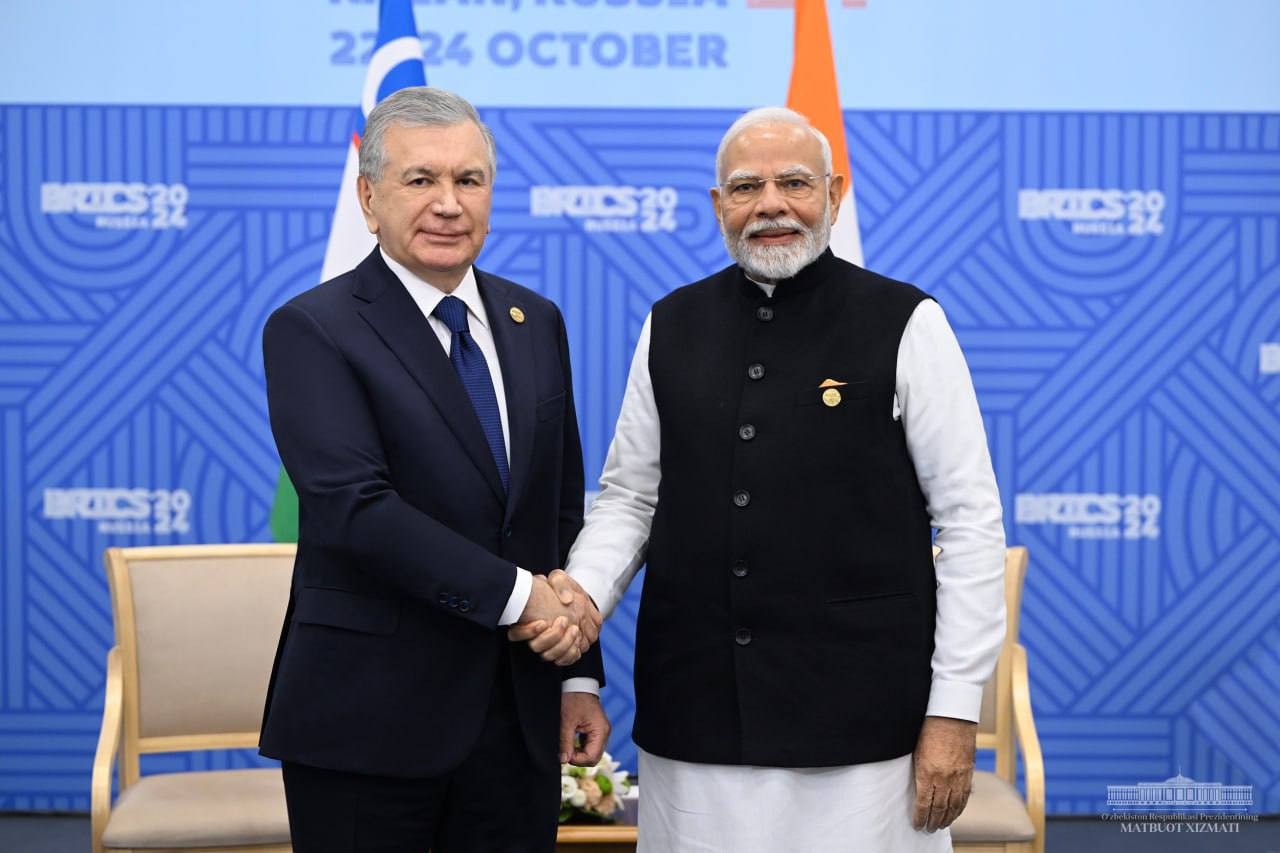BAKU, Azerbaijan, August 15. Uzbekistan and India are hitting the ground running in a fresh chapter of strategic cooperation, as a recent phone chat between President Shavkat Mirziyoyev and Prime Minister Narendra Modi has laid the groundwork for joint projects and bolstered mutually beneficial collaboration.
Bilateral relations are picking up steam, as India keeps coming up as one of Uzbekistan’s top ten trading partners. As of June 2025, bilateral commerce between the two nations escalated to $641.4 million, reflecting a remarkable 60 percent uptick since the onset of the fiscal year - positioning it as one of the most significant growth trajectories among Uzbekistan’s international trade collaborators. Throughout this timeframe, approximately 40 novel joint ventures were instantiated, while the portfolio of potential agreements with Indian enterprises surpasses $2 billion. These accords encompass critical domains, such as pharmaceuticals, chemical compounds, energy matrices, digital innovations, and agrarian systems.
The current stage of cooperation started to take root after President Mirziyoyev’s trips to India in 2018 and 2019. During the 9th International Investment Summit “Dynamic Gujarat”, pivotal initiatives were articulated that delineated the strategic trajectory of bilateral relations. The primary objective was to establish robust logistical and commercial conduits facilitating connectivity between Central and South Asia.
For Uzbekistan, a landlocked country, having transport corridors that are as smooth as butter is crucial to keep the wheels turning in the right direction. In the grand scheme of economic diversification, ramping up industrial production, and giving exports a leg up, it's crucial to have the know-how to get goods out the door and into external markets in a jiffy and without breaking the bank. This is where the interests of Uzbekistan and India converge, laying the foundation for a long-term partnership.
One of the pivotal initiatives is the International Transport Corridor North–South, which delineates the development of a rail network linking Uzbekistan to India through the Gulf of Oman. India has strategically allocated substantial resources towards the enhancement of the Chabahar port in Iran, thereby catalyzing novel avenues for cargo transit optimization and trade proliferation. This initiative yields advantages not solely for Uzbekistan and India but extends its positive externalities across the entire Central Asian geopolitical landscape.
“We have begun work on a new corridor through the Chabahar port. This port can and should become a key link in cargo delivery between our countries under the North–South initiative. On the agenda of the first meeting of ministers, we propose including the development of a program for a network of ‘dry’ ports, the provision of mirrored discounts and preferential tariffs for cargo transportation, and the simplification of customs clearance procedures,” emphasized Shavkat Mirziyoyev during his speech at the first “India–Central Asia” summit in January 2022.
At present, a comprehensive multimodal logistics framework for
containerized cargo transit from the Indian maritime hubs of
Mundra, Nhava Sheva, and Chennai to the landlocked territory of
Uzbekistan has been effectively established. Freight is dispatched
via maritime channels to the Bandar Abbas terminal in Iran,
subsequently transiting through rail networks to the Sergeli
interchange in Tashkent.
Consequently, the trajectory partially leverages the North–South
logistical conduit, which conventionally links Indian and Iranian
maritime hubs, while the terrestrial segment along the eastern axis
traverses Turkmenistan.
The inaugural freight locomotive successfully arrived at its
terminus, executing the delivery of 20 TEUs, each measuring 20
feet, across a span of 2,673 kilometers within a timeframe of 20
days. In the forthcoming paradigm, transit duration is projected to
be optimized to a mere 15 days, thereby enhancing operational
efficiency of the logistical pathway and fortifying economic
interdependencies among the nations involved.
Industry analysts assert that Uzbekistan's engagement in the North–South initiative catalyzes the potential for the nation to emerge as a pivotal logistics nexus within the Central Asian region. An optimized railway infrastructure facilitates the seamless transshipment of freight across multiple vectors within the corridor framework. Uzbekistan is strategically enhancing its transportation networks and developing new thoroughfares, thereby fortifying its infrastructural capabilities. Particular emphasis is placed on the concept of leveraging the “Iranian river” as a conduit for freight logistics, which has the potential to optimize expenditure and enhance delivery timelines. Execution will necessitate the establishment of maritime hubs and transshipment facilities, alongside the assurance of navigational security protocols.
Of course, there are a few bumps in the road, like the shaky
political landscape in Afghanistan and the pressing need to get the
transport infrastructure up to snuff. Nonetheless, the tactical
significance of the North–South corridor is unequivocal: it not
only broadens the landscape of export logistics but also catalyzes
capital influx, fosters industrial synergies, and facilitates
Uzbekistan's integration into the global economic framework.
The political synergy between Uzbekistan and India continues to
serve as a robust cornerstone of their bilateral engagement. The
nations consistently engage in synergistic partnerships within
multilateral frameworks like the United Nations and the Shanghai
Cooperation Organization, collectively tackling pivotal challenges
pertaining to both global and regional security paradigms. Focused
efforts are directed towards counter-terrorism initiatives,
enhancing geopolitical stability in the Central and South Asian
regions, and safeguarding energy security frameworks.
Next steps include a meeting of the Intergovernmental Commission in Tashkent, where new agreements on industrial cooperation, investment, and education are planned to be signed. In addition, the sides agreed to hold mutual Days of Culture and Cinema to strengthen humanitarian ties and trust between peoples.
The partnership between Uzbekistan and India is not just a flash in the pan; it's turning into a well-oiled machine that goes beyond piecemeal efforts. Collaborating on transport corridors and industrial initiatives lays the groundwork for a lasting partnership that can weather any storm. For Uzbekistan, this initiative represents a strategic advancement towards establishing itself as a pivotal logistics and economic nexus within Central Asia. Concurrently, for India, it offers a robust conduit for integrating its market dynamics with the regional landscape.







